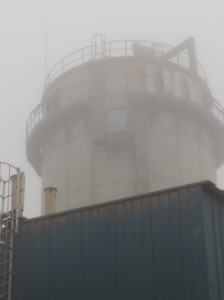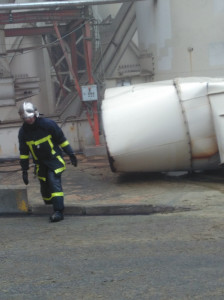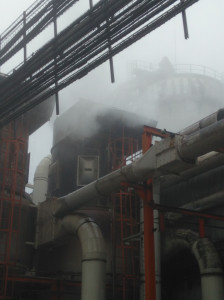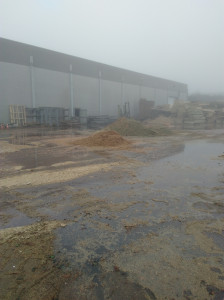At around 4:00 p.m., explosions followed by fires were observed in the sorting facility of a wood panel manufacturing plant. The personnel were evacuated, and the fire brigade cooled down the silos. When the fire was at its worst, 80 firefighters were present on site, and 6,500 l/min of water was used. This water was returned to a 600 m³ recovery basin and then reused to fight the fire. Temperatures of 466 °C and 210 °C were measured in the two silos. Throughout the night, firefighters were able to empty the coarse particles from the silos using an auger feed system. The sawdust was removed by 3 bucket loaders, and then spread out and sprayed down with water. On two silos containing fine particles and filled to 100% of their capacity (2 x 120 m³), the auger was unable to extract the wet chips that had agglomerated and formed a vault structure on the inside. The sawdust was finally removed 3 days later using fire hoses to dislodge the material through openings made in the lower part of the silo. The two other silos were emptied using the same method. Five days were required to empty the last silo involved in the fire. A company specialising in very high-pressure equipment was called in to dislodge the material.
Fires, primary and secondary explosions had damaged many pieces of equipment, including 17 conveyors, 8 augers, 3 wood sorters, 2 wood selectors, 1 rotary feeder and 2 fans, 2 silos, 1 cyclone (non-ATEX-classified). The explosion of the cyclone projected fragments to the ground (weighing several hundred kilograms), onto the roof of one building and against the facade of another building. Two other silos, 5 rotary feeders and 2 augers appear to have blocked the transmission of the explosions.
The operator implemented the following measures:
- update of the workshop’s ATEX zoning;
- removal of the vertical auger that had caused the overheating;
- separation of the systems of the 2 wood dryers and installation of a silo that inhibits propagation of an explosion downstream from each of the dryers;
- installation of temperature sensors and a sprinkler system in the 2 silos;
- removal of sections of roofing on high-risk installations (particularly sorters) to prevent the transmission of hot spots in the event of an explosion;
- installation of 2 additional “ATEX approved” rotary feeders.
The Inspection authorities for classified facilities requested that the operator undertake additional measures:
- installation of a foam extinguishing system in each of the “expansion venting” silos;
- updating of risk analysis and hazard analysis;
- a conformity audit of the installations in ATEX zones;
a status report on uncoupling installations and ventable surfaces with regard to explosion risks.







